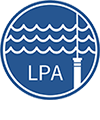Climate fluctuations are driving increasingly disruptive changes in northern environments and the ecological services these ecosystems provide to Inuit communities in Labrador. Culture and human occupation evolve spatially and temporally in a complex relation with the dynamic natural landscape, for which the functioning and development are still poorly known in Labrador. Modern climate changes pose new challenges and raise important questions about the integrity and vulnerability of coastal arctic and subarctic environments, which is why it is essential to further knowledge about the dynamics and processes characterizing the northern coastal ecosystem of Labrador. Paleoenvironmental research is needed to acknowledge its evolution and to predict future responses of the natural landscape to climate changes.
This research project is part of an international multidisciplinary research initiative and aims, through a paleolimnological approach, 1) to reconstitute the post-glacial paleoenvironmental and palaeoclimatic evolution of Dog Island, Labrador and 2) to identify the long-term effects of climate changes on coastal and terrestrial ecosystems, link these variations to the region’s archaeological evidences and determine their impacts on the subsistence activities of Inuit communities of Nunatsiavut. This project will concomitantly contribute to recent archaeological and paleoecological researches in the region of Nain and to the development of adaptation strategies and policies as it will address, via the finding of new data useful for climate predictions, critical issues related to climate variability and the potential impacts on various ecosystems services.
Dog Island is an island off the Labrador coast, about 40 km northeast of the village of Nain. The history behind the landscape of the region explains a relief shaped during several thousand years by the processes of orogenesis, the glaciations, the marine transgressions and regressions as well as the processes of fluvial erosion. The geomorphology of the Labrador coast consists mainly of an eroded plateau, bays, long glacial valleys perpendicular to the coast and numerous lakes. The sediments of these lakes contain excellent natural archives and precious bioindicators of climate fluctuations, including diatoms, which reflect changes in environmental components and provide the opportunity to reconstruct the evolution of paleoclimates. Two lakes were sampled near known archaeological sites, south and east of Oakes Bay, the main east-west facing bay of the island.
Lake sediments will be analyzed according to diatom assemblages in order to provide a portrait of postglacial climate variability of the region. Since the assemblages and composition of microfossils are related to the climatic and aquatic conditions in which they developed and are sensitive to limnological changes, qualitative and quantitative analyzes will enable the reconstruction of the dynamics of climate-related components such as salinity, temperature, fluctuations in water levels as well as the paleoproductivity and the quality of the water. The analysis of proxies preserved in sedimentary records will be combined with dating methods that will place this information in a chronological framework.
This multidisciplinary research is to reconstruct the region’s environment and climate, while providing essential knowledge on processes that shape the subarctic costal ecosystem and its evolution in the context of climate changes. The results of this research will also document the relationship between regional archaeological data and the evolution of paleoenvironments. It will eventually help the development of adaptation measures necessary for the sustainability of cultural and subsistence activities of Labrador communities as well as the creation of strategies to address the new challenges posed by climate changes.



